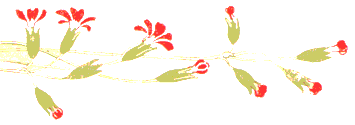

If fire can give the splendour, then, why does not a stick or blade or pebble placed in the fire become as shining as gold? So one has to conclude that the splendour came not through fire but out of its own inner nature. The Prathyagatma, or the Inner presiding Atma, is separate from the Five Sheaths of the Individual, the Panchakosas; it shines with its own splendour; it is the witness of the activities and consequences of the three Gunas; it is immovable; it is holy and pure; it is eternal; it is indivisible; it is self-manifested; it is Peace; it has no end; it is wisdom itself. Such an Atma has got to be cognised as Oneself!
To realise this Atma, this Jnanaswarupa, there are four obstacles to be overcome: Laya, Vikshepa, Kshaya and Rasa-aaswaadanam. Let us take these one by one.
LAYA: Sleep: when the mind withdraws from the external world, it enters into deep sleep or Sushupthi, on account of the overpowering influence of Samsara. The sadhaka should arrest this tendency and attempt to fix the mind on to Atmavichara, or the Inquiry into the nature of the Atma. He must keep watch over the mind so that he may keep awake. He must discover the circumstances that induce the drowsiness and remove them in time. He must start the process of Dhyana again and again. Of course, the usual producer of drowsiness and sleep during Dhyana is indigestion. Over-feeding, exhaustion through too much of moving about, want of sufficient sleep at night, these too cause sleepiness and drowsiness. So it is advisable to sleep a little during noon on those days when you wake up after a sleepless night, though generally all those who engage in Dhyanam should avoid sleep during daytime. Do not eat until you feel proper hunger. Practise the art of moderate eating. When you feel three-fourths full, desist from further eating; that is to say, you will have to stop even when you feel you can take a little more. The stomach can be educated in this way to behave properly. Over-exercise too is not good; even walking can be overdone. You can walk until you conquer drowsiness; but remember, you cannot plunge into Dhyanam immediately after you have warded off sleep.
VIKSHEPA: Waywardness: the mind seeks to run after external objects and so constant effort is needed to turn it inwards, away from the attractions of sensory impressions. This has to be done through the rigorous exercise of the Intellect, of Inquiry. Discriminate and get the conviction driven into you that these are evanescent, temporary, transformable, liable to decay and, therefore, unreal, Mithya not Sathya. Convince yourselves that what are sought after as pleasurable and avoided as painful are only the fleeting products of sensory contacts; train yourselves in this way to avoid the distractions of the external world and dive deep into Dhyanam.
A sparrow pursued by a hawk flies in despair for shelter into a house;
but it is anxious to again fly into the outer world, isn't it? So also,
the mind is anxious to go again into the outer world, from the Atma where
it takes refuge. Vikshepa is this mental attitude, the urge to run back
into the world from one's shelter. The removal of Vikshepa alone will
help the concentration of the mind in Dhyanam. ![]()